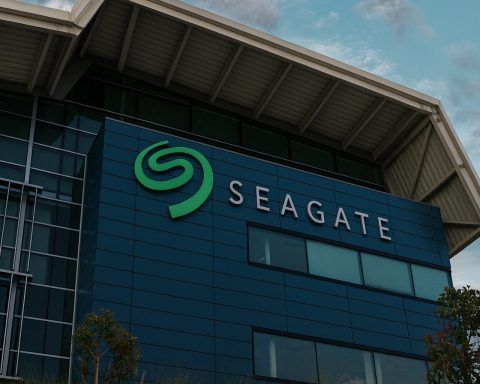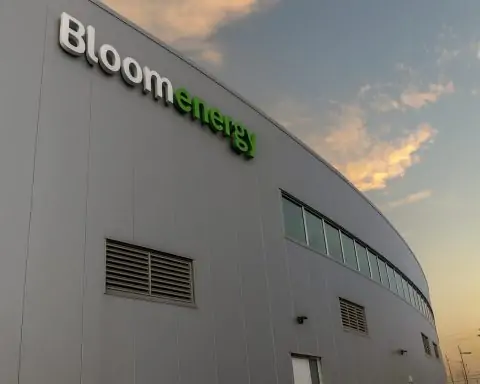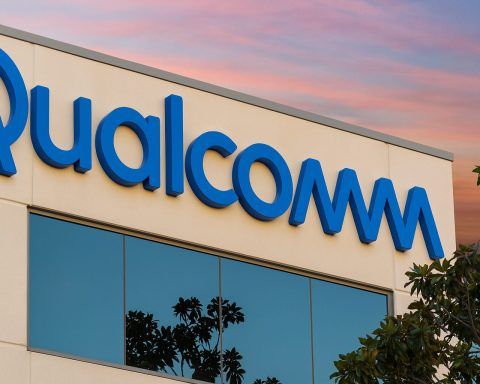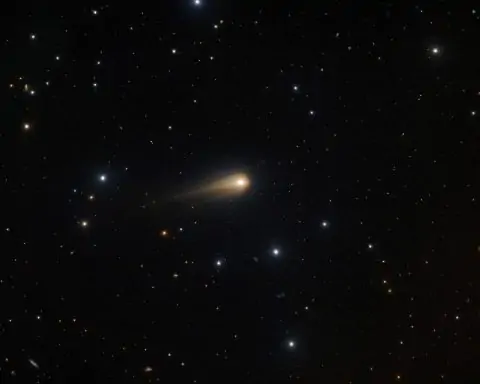Key Facts
- SpaceX caps August with record launch pace: A Falcon 9 rocket launched 28 Starlink satellites from Florida on Aug. 31, marking SpaceX’s 108th launch of 2025 and pushing the year’s Starlink deployments past 1,900 satellites [1] [2]. The reusable booster (on its 23rd flight) landed successfully at sea [3]. SpaceX reports its Starlink internet service now tops 7 million users across 150+ countries [4].
- ESA’s JUICE swings by Venus: Europe’s Jupiter Icy Moons Explorer (JUICE) completed a crucial Venus gravity-assist flyby on Aug. 31, tweaking its trajectory en route to Jupiter’s moons [5]. The probe remains on course to reach the Jovian system by July 2031 [6].
- Solar flare sparks aurora alert: A long-duration M2.7 solar flare erupted Aug. 30, hurling an Earth-directed coronal mass ejection. Space weather agencies warn the CME’s arrival by late Sept. 1 could trigger G3-level geomagnetic storms, potentially causing auroras visible as far south as Pennsylvania, Iowa and Oregon [7]. Satellite operators are on watch for increased drag and surface charging effects [8].
- Titan’s lakes may brew life’s ingredients: New NASA-backed research suggests Saturn’s moon Titan’s methane-rich lakes could form cell-like vesicles naturally [9]. In lab simulations, simple organic molecules in Titan’s frigid hydrocarbon lakes self-assemble into membranous bubbles – a possible precursor to life [10]. “We’re excited about these new ideas because they can open up new directions in Titan research and may change how we search for life on Titan,” said NASA scientist Conor Nixon [11].
- Interstellar comet surprises scientists: Astronomers observing interstellar comet 3I/ATLAS (only the third known visitor from beyond our solar system) found an exotic chemistry in its coma – unusually high carbon dioxide levels and abundant nickel, but little water [12] [13]. “We just cracked open the door to a whole new world of chemistry that we never had access to before,” said astronomer Thomas Puzia, whose team analyzed the data [14].
- Commercial space booms (and shakes up):Chinese startup Orienspace raised a Series B+ round of “tens of millions” of dollars to fuel the debut of its Gravity-2 reusable rocket, as China’s private launch sector accelerates [15]. In the U.S., York Space Systems delivered 21 satellites for the Pentagon’s new mesh-network constellation, set to launch Sept. 10 in the first deployment of the Space Development Agency’s data relay fleet [16]. (Earlier in August, Firefly Aerospace’s IPO raised a blockbuster $868 million [17], signaling investor appetite in space ventures.)
- Global cooperation and competition intensify: Space agency chiefs from G20 nations convened in South Africa on Sept. 1 for the 6th Space Economy Leaders Meeting (SELM6), focusing on space’s role in sustainable development and “inclusive global economic growth” [18] [19]. Late August saw a flurry of bilateral space agreements – e.g. Nigeria and Brazil’s new space science cooperation MOU [20] – underscoring growing international partnerships. At the same time, NASA’s leadership warned that the U.S. and China are in a new race for the Moon’s resource-rich regions, as NASA interim Administrator Sean Duffy emphasized the need to secure the “most resource-rich part of the moon” ahead of China [21].
Satellite Launch Highlights
Starlink Launch Surge: SpaceX punctuated the end of August with a sunrise Falcon 9 launch on Aug. 31, carrying 28 Starlink V2 Mini satellites to low Earth orbit [22]. Liftoff occurred at 7:49 a.m. EDT from Cape Canaveral’s SLC-40, and about 8½ minutes later the veteran booster (B1077, now with 23 flights) nailed a landing on the Just Read the Instructions droneship [23] [24]. This mission – Starlink Group 10-14 – was SpaceX’s 9th Starlink launch of the month and 108th flight of 2025, extending the company’s record-breaking cadence [25] [26]. All told, over 1,900 Starlink satellites have been deployed in 2025, helping push SpaceX’s share of active satellites to roughly two-thirds of all in orbit [27].
Notably, SpaceX announced its Starlink internet service has grown to 7 million subscribers worldwide (up from 4 million a year ago) across 150+ countries [28]. To sustain demand, Starlink production is churning out satellites at an unprecedented clip. “Generally satellite manufacturing is a very slow process… At SpaceX, we iterate very fast and we have learned how to build satellites at a 70 sats per week rate,” said Cornelia Rosu, SpaceX’s senior director of Starlink production [29]. The Aug. 31 mission capped a month that also saw SpaceX achieve its 400th Falcon booster landing and fly a Falcon 9 booster a record 30th time [30] [31] – clear signs that rocket reusability has become routine.
Blue Origin’s Mixed Fortunes: Blue Origin, meanwhile, is preparing for major missions even as it grapples with delays. The company confirmed it is targeting Sept. 29 for the second launch of its New Glenn heavy-lift rocket, which will loft NASA’s ESCAPADE twin Mars orbiters on an interplanetary trajectory [32]. This will be New Glenn’s first mission beyond Earth orbit – an ambitious test for the new booster – and Blue Origin will again attempt to land the 57 m first stage on a sea-based platform [33]. New Glenn’s debut in January successfully reached orbit (carrying a test payload) but fell just short of a booster recovery, so all eyes will be on this next flight [34].
On the suborbital front, Blue Origin’s New Shepard rocket remains grounded for now. The company had aimed to fly its 35th New Shepard mission (NS-35) – an uncrewed research flight carrying the program’s 200th payload – in late August. However, repeated launch attempts were scrubbed due to a booster avionics issue, and as of Sept. 1 no new date has been set [35] [36]. The reusable New Shepard capsule, RSS H.G. Wells, is packed with 24 student and teacher-designed experiments (from plant growth in microgravity to spacecraft fuel cell tests) ready for a 10-minute suborbital jaunt [37] [38]. Blue Origin says both the booster and capsule will be recovered as usual once the flight occurs [39]. As the company troubleshoots New Shepard, it also rolled out plans for crewed spaceflights: Blue Origin announced a 13th tourist launch (NS-33) earlier in the summer and unveiled a new lunar lander concept (Blue Moon) to support NASA’s Artemis program [40] [41]. Despite hiccups, Blue Origin is clearly signaling its intent to compete on multiple fronts – from suborbital science missions to Moon and Mars ventures.
Other Launch Developments: While Aug. 31 itself saw only the Starlink mission lift off, the broader period featured a flurry of global launch activity. China’s state-owned and commercial players have kept up a rapid pace: by late August, China launched 57 satellites for its new “Guowang” low-orbit broadband constellation, with three launches in just eight days [42] [43]. (Guowang aims to deploy nearly 13,000 satellites by 2027, rivaling SpaceX’s Starlink in scale [44].) And on Aug. 27, Rocket Lab successfully flew an Electron rocket from New Zealand carrying five small satellites (including an IoT payload for EchoStar) – the company’s 12th launch of the year [45] [46]. In India, the space agency ISRO stood readying its next PSLV mission (RISAT-2A Earth-observer), while startup Skyroot Aerospace was counting down to a September demo of its Vikram 1 orbital rocket [47]. Although these launches fall just outside the Aug 31–Sep 1 window, they underscore a very busy transition into September for global spaceflight.
Deep Space & Planetary Missions
Venus Flyby Boosts JUICE: A highlight of the weekend was ESA’s JUICE (Jupiter Icy Moons Explorer) successfully performing its Venus flyby on Aug. 31. The spacecraft skimmed past Venus – its second gravity assist maneuver since launch – to gain speed and adjust its course toward the outer solar system [48]. Preliminary data indicate the flyby went as planned, putting JUICE on track for its ultimate destination: the Jupiter system, where it will arrive in July 2031 to study Ganymede, Europa, and Callisto [49]. The Venus encounter provided an opportunity to test instruments and even conduct some bonus science (several onboard sensors took readings of Venus’s atmosphere and magnetotail during the flyby) [50]. This complex interplanetary cruise – which will include three Earth flybys and another Venus pass – illustrates the patience needed for outer planet missions. If all goes well, JUICE will become the first European probe to orbit an icy moon (Ganymede) and could revolutionize our understanding of subsurface oceans and habitability around Jupiter.
Sun, Here We Come: In Florida, NASA and NOAA are prepping a trio of spacecraft for an ambitious joint launch to study the Sun. Inside Astrotech’s cleanrooms near Kennedy Space Center, technicians are fueling and testing NASA’s Interstellar Mapping and Acceleration Probe (IMAP) along with two ride-along missions: NASA’s small Lunar Geocorona Observatory and NOAA’s Space Weather Follow-On (SWFO-L1) satellite [51] [52]. All three are scheduled to launch together on a Falcon 9 on Sept. 23, heading for the Sun-Earth L₁ point about 1.5 million km out [53]. IMAP will map the heliosphere – the bubble of particles blown by the solar wind – with ten instruments, while SWFO-L1 will monitor solar flares and CMEs as NOAA’s new early warning sentinel [54] [55]. The combined mission reflects a growing emphasis on heliophysics. “With the multitude of other missions we’ve launched even just this year, it is a wonderful time to be a heliophysicist,” quipped Dr. Joseph Westlake, director of NASA’s heliophysics division [56]. Scientists are eager for IMAP’s data, which will help answer how solar wind particles are accelerated and how the heliosphere interacts with the galaxy. But as Principal Investigator David McComas noted, the final pre-launch weeks are nerve-wracking: “Everything comes together and if any issue pops up… it can set back the launch… But we’re incredibly excited because you know the morning of the 23rd… we’re going to be launching and it’s going to be the most spectacular thing for all of us who spent 10 years or more working on this mission.” [57]
Artemis Updates – Orion Fueled: On the human spaceflight front, NASA’s Artemis II mission hardware reached a milestone in August. The Orion crew spacecraft for Artemis II (the first crewed Moon-loop mission) completed propellant loading and fueling at Kennedy Space Center and was transferred to the Launch Abort System Facility on Aug. 10 [58]. There, technicians are now installing the escape tower that would yank Orion and its four astronauts to safety in a rocket emergency [59] [60]. This progress keeps Artemis II on schedule for a launch in the February–April 2026 window [61]. As part of the preparations, the Artemis II astronauts – NASA’s Reid Wiseman, Victor Glover, Christina Koch, and CSA’s Jeremy Hansen – conducted their first suited checkouts inside Orion, practicing pre-launch procedures in their orange pressure suits while hooked into the spacecraft’s life support systems [62]. The Artemis program also got a budgetary and policy boost: on Aug. 8, the White House and NASA announced plans to deploy a nuclear fission surface power reactor on the Moon by 2030 as part of sustaining a lunar base [63] [64]. This technology, to be developed with the Department of Energy, would enable long-term habitats and resource utilization at the lunar south pole, where sunlight is limited. (NASA is currently soliciting industry designs for a 40-kilowatt class reactor.) Such developments show Artemis is not just about flying missions, but also about investing in infrastructure to “live off the land” on the Moon – a vision that will require robust international partnerships and perhaps a bit of competitive urgency (given that China is aiming to land astronauts and establish its own lunar outpost around 2030).
Planetary Defense & Other Missions: Elsewhere in the solar system, NASA’s OSIRIS-REx probe (now en route back from asteroid Bennu) fine-tuned its trajectory for a planned Sept. 24, 2025 Earth return and sample capsule landing in Utah – a highly anticipated event later this month (scientists hope to get at least 250 grams of asteroid dust). And looking at Mars, NASA officials are quietly reassessing the Mars Sample Return effort after an independent review; with budgets tight, there’s growing chatter about internationalizing the project (possibly involving ESA or commercial players more) to ensure Mars rocks come to Earth by the 2030s. While no firm decisions were made by Sept. 1, the backdrop is a friendly “race” with China, which, as noted below, has its own Tianwen-3 sample-return mission slated for 2028 [65] [66]. The coming weeks – including the G20 space economy meeting – may yield clues on how global cooperation could shape these deep-space missions.
Astronomy & Space Science Roundup
Sun Erupts, Skywatchers Excited: Solar activity surged as the Sun’s 11-year cycle heads toward its peak. Late on Aug. 30, an M2.7-class solar flare erupted from central sunspot AR4199, lasting for nearly half an hour [67]. The flare unleashed a fast-moving full-halo CME (coronal mass ejection) that models predict will strike Earth’s magnetic field by September 1–2 [68] [69]. The NOAA Space Weather Prediction Center issued a storm watch, expecting G2 (moderate) to G3 (strong) geomagnetic storm conditions [70]. Under a G3 storm, auroras could dip much farther south than usual – possibly lighting up skies from Alaska and Canada down into the northern continental US and Europe [71]. In fact, aurora forecast maps show potential visibility in 18 US states (as far south as Oregon, Pennsylvania, Iowa) on the nights of Sept. 1 and 2 [72]. Space-weather enthusiasts and photographers are on high alert for a rare Labor Day aurora show.
Satellites and power grids are also taking precautions. NOAA warned that strong geomagnetic storms can induce voltage irregularities in power systems and cause increased drag on low-Earth orbit satellites [73]. Operators of spacecraft have been tracking the incoming CME, ready to put sensitive electronics in safe mode if needed. Airlines, too, have been notified since high-frequency radio communications and GPS signals may see brief disruptions during the geomagnetic unrest [74]. This event follows a series of flares in late August – the Sun produced three M-class flares just days ago [75] – and forecasters say there’s a 20% chance of an X-class flare in the next week [76]. The Sun is certainly reminding us it’s nearing solar maximum, keeping both scientists and skywatchers busy.
Alien Chemistry in an Interstellar Comet: Scientists are marveling at data from Comet 3I/ATLAS, an interstellar interloper currently passing through our solar system. New observations from both the ESO Very Large Telescope (VLT) in Chile and NASA’s James Webb Space Telescope have revealed surprising chemical clues about this visitor’s origin [77]. The comet’s coma (the gas cloud around its nucleus) contains an unexpectedly high ratio of carbon dioxide (CO₂) to water, one of the highest CO₂ abundances ever seen in a comet [78] [79]. At the same time, astronomers detected nickel vapor in the coma – but intriguingly, no detectable iron [80]. This is puzzling, because comets in our solar system typically have trace amounts of both nickel and iron if they have any metals at all. The unusual composition hints that 3I/ATLAS formed around a distant star under very different conditions.
Researchers from the Pontifical Catholic University of Chile and NASA published preliminary findings (on arXiv preprint server) positing that some never-before-seen chemical process enriched the comet in nickel without iron [81]. One idea is that the comet’s home star system might have had regions with selective metal chemistry, or the comet spent eons in interstellar space allowing unique reactions. “We just cracked open the door to a whole new world of chemistry that we never had access to before,” exclaimed astronomer Thomas Puzia, who led the VLT analysis [82]. Webb’s infrared spectrometer, meanwhile, confirmed the comet is releasing copious CO₂ gas – far more than expected relative to water vapor [83] [84]. This could mean 3I/ATLAS formed in an extremely cold environment rich in CO₂ ice, or that it’s a fragment of a carbon-rich dwarf planet from another system. The comet will reach perihelion (its closest point to the Sun) in late October 2025 [85], after which it will swing back out into interstellar space. Astronomers are racing to gather as much data as possible in the coming weeks. With each interstellar object (from ʻOumuamua in 2017 to Borisov in 2019 and now ATLAS) showing wildly different traits, scientists are thrilled – these celestial visitors are time capsules carrying secrets from other suns.
Enceladus and Titan – Life’s Laboratory: Closer to home, new studies of Saturn’s moons Titan and Enceladus made waves. On Titan, famous for its liquid methane lakes and thick orange atmosphere, researchers found a potential pathway for “protocell” formation in the moon’s lakes [86] [87]. Unlike Earth’s water-based chemistry, Titan’s lakes are liquid methane/ethane at –180 °C. A NASA team simulated splashes of these hydrocarbons and the complex organic haze that rains down from Titan’s sky. They discovered that certain amphiphile molecules (which have both hydrophobic and hydrophilic ends) could arrange themselves into vesicles – basically little bubble-like membranes – in Titan-like conditions [88] [89]. These would be cell membrane analogues, albeit with no water involved, potentially capable of harboring simple chemical reactions. It’s a tantalizing hint that Titan’s seas might be spontaneously forming some of the structural building blocks of life (albeit an “alien” life with liquid methane instead of water). “The existence of any vesicles on Titan would demonstrate an increase in order and complexity, which are conditions necessary for the origin of life,” explained Dr. Conor Nixon of NASA Goddard, one of the study’s co-authors [90] [91]. “We’re excited about these new ideas… they may change how we search for life on Titan in the future.” [92] This research comes ahead of NASA’s Dragonfly mission (a rotorcraft lander set to launch in 2027), which will explore Titan’s surface and could indirectly test these theories about Titan’s chemistry [93]. While Dragonfly won’t sample the lakes, it will analyze surface organics and conditions that tie into this puzzle of prebiotic chemistry on Titan.
Meanwhile, Saturn’s tiny moon Enceladus continues to intrigue. Though not a headline on Aug 31/Sept 1, it’s worth noting that a paper published a few days earlier reported the presence of phosphorus (a key bio-essential element) in Enceladus’s subsurface ocean, detected via Cassini spacecraft data. This finding, announced Aug. 28 in Nature, didn’t make our two-day news window explicitly, but it bolsters the theme of habitability in the Saturn system. The more we look, the more we find that multiple moons out there (Europa, Enceladus, Titan) have the ingredients and energy sources that could, just maybe, support life or its precursors.
Black Hole Planets? In the realm of theoretical astrophysics, a provocative new study published Sept. 1 in Physical Review D posits that dark matter could turn gas giants into planetary-mass black holes [94] [95]. Physicists at UC Riverside modeled how a Jupiter-like exoplanet traveling through the Milky Way’s dark matter halo might gradually accrete a vast amount of dark matter particles into its core [96] [97]. If certain dark matter candidates (“superheavy” particles that don’t annihilate each other) exist, they could accumulate to the point of gravitational collapse inside a planet over billions of years [98]. The result: the planet’s core implodes into a tiny black hole, which then devours the planet from within, leaving a lone black hole of roughly planet mass [99]. No such objects have been observed – this is very speculative – but the authors suggest upcoming sky surveys might indirectly spot them (for example, a planet that suddenly dims or disappears, or odd gravitational lensing events). If even one planet-mass black hole is found, it would be revolutionary evidence for new physics. Conversely, if massive planets like Jupiter are all still intact, that actually places limits on dark matter properties. As lead author Mehrdad Phoroutan-Mehr noted, “If astronomers were to discover a population of planet-sized black holes, it could offer strong evidence in favor of [our] model… On the other hand, many exoplanets not having collapsed puts constraints on what dark matter can be.” [100] [101]. It’s a fascinating crossroad of cosmology and exoplanet science – using distant worlds as laboratories for dark matter, one of the universe’s deepest mysteries.
Sky Highlights: Skywatchers enjoyed some treats over the weekend as well. In the pre-dawn hours of Sept. 1, Venus, Jupiter, and Mercury all aligned in a neat little planetary parade low on the eastern horizon [102]. Early risers with clear skies could see brilliant Venus and Jupiter forming a line with faint Mercury just above the horizon – a relatively rare three-planet conjunction to kick off the month. And on the night of Aug. 31, the annual Aurigid meteor shower peaked. Although typically a minor shower (only ~5 meteors per hour under dark skies), forecasters had hinted this year’s Aurigids might produce a brief outburst. Reports from observers in Europe suggest a slight uptick around 2100 UTC on Aug. 31, with a few bright, long-lasting meteors (Aurigids are known for slow-moving fireballs). This shower originates from Comet Kiess, which last visited the inner solar system around 1911 and leaves dusty trails that Earth occasionally intersects. While the Aurigids didn’t rival August’s famous Perseids, they provided a nice warm-up for the next big sky event: a total lunar eclipse coming on Sept. 7–8. Yes, a “Blood Moon” is on the way later this week, visible across much of Europe, Africa, and Asia. Amateur astronomers are gearing up for that, as it will be the last total lunar eclipse until 2028. From rockets to auroras to eclipses, it seems there’s always something exciting happening in our sky.
Space Industry and Business News
Venture Funding Flows: The closing days of August brought a wave of investment news in the space sector, highlighting both the promise and challenges of the industry. On Aug. 31, Chinese launch startup Orienspace announced it has raised Series B+ financing in the “tens of millions” (USD) range [103]. Orienspace, founded in 2020, is developing the Gravity-2 rocket – a two-stage medium-lift launcher roughly comparable to SpaceX’s Falcon 9 (including plans for a reusable first stage) [104] [105]. The new funding will help the firm push toward a first test flight of Gravity-2, which is targeted for late 2025 or 2026. In fact, Orienspace just completed a full-duration hotfire test of its Yuanli-85 kerosene engine and has been constructing a sea launch platform for future missions [106] [107]. “Orienspace’s achievements are a testament to China’s rapidly advancing space capabilities and its growing influence in the global space industry,” said CEO Yao Song in a recent statement [108]. The company aims to match SpaceX on cost per kilogram to orbit, and ultimately launch 10+ missions per year within a few years [109] [110]. Orienspace’s raise is part of a broader boom in Chinese commercial space – just this summer, rival startup LandSpace reached orbit with a methane-fueled rocket, and Space Pioneer is prepping its Tianlong-3 reusable launcher debut [111]. However, it’s not all smooth sailing: overall venture funding in China’s space sector is down a bit from its 2021 peak, mirroring a global dip in startup investment. The successful fundraise by Orienspace therefore stands out and suggests investors still have an appetite for space plays with strong government support or unique tech.
In the United States, the capital markets story is even bigger: Firefly Aerospace’s IPO earlier in August was a stunning success, raising about $868 million in an upsized offering that valued the launch company at $8.5 billion [112]. Firefly, which builds the medium-class Alpha rocket and is developing a lunar lander, became one of the first pure-play space launch companies to go public since the SPAC wave of 2021. Its stock debut on the NYSE in early August saw shares jump, signaling investor confidence in Firefly’s prospects – a stark contrast to some other space SPACs that have struggled. The infusion gives Firefly a war chest to scale up production and attempt Alpha’s first re-flight after its successful orbital launch last year. Industry analysts noted that Firefly’s IPO could reopen public markets for space firms, which had been relatively closed in 2022–2023. Indeed, a couple of satellite tech companies are now reportedly considering IPOs or SPAC mergers in late 2025, riding on Firefly’s coattails.
Satellite Networks and M&A: Traditional space and defense giants are also making moves. Denver-based York Space Systems announced on Aug. 25 that it delivered 21 satellites for the U.S. Space Development Agency (SDA) – these will form the first layer of the Pentagon’s new low-Earth-orbit constellation for missile tracking and data relay [113]. The batch of York satellites (which feature small bus platforms with optical cross-links) is set to launch on Sept. 10 aboard a SpaceX Falcon 9 from Vandenberg SFB [114]. This marks the initial deployment of SDA’s Tranche 1 Transport Layer, a mesh network that will eventually consist of hundreds of small satellites providing resilient, low-latency communications for U.S. military forces [115]. The Sept. 10 mission – essentially “Batch 0” of the network – will kick off a flurry of launches extending into 2026 to populate the constellation. SDA’s model of buying from commercial manufacturers (York, Lockheed Martin, and Northrop Grumman each have contracts for tranches of satellites) seems to be bearing fruit, as York was able to mass-produce and deliver its segment on time. “This launch will kick-start a months-long campaign to orbit 126 data transport sats and 28 missile-warning sats,” an SDA official noted [116]. It’s a significant milestone in the U.S. military’s shift toward proliferated LEO systems.
Elsewhere, Rocket Lab completed its acquisition of Geost, LLC (a U.S. maker of space domain awareness sensors) for $275 million on Aug. 12 [117]. The purchase, Rocket Lab’s largest to date, expands its portfolio beyond launch vehicles and satellites into electro-optical infrared (EO/IR) sensor tech for missile tracking and space surveillance [118]. Rocket Lab’s CEO Peter Beck said Geost’s expertise will help the company offer end-to-end solutions for national security space missions [119]. The move also signals ongoing consolidation in the industry – companies are vertically integrating to provide everything from rockets to satellite buses to payloads. Along similar lines, Intuitive Machines (a lunar lander startup) announced plans to acquire KinetX Aerospace, a spacecraft navigation firm, to bolster its deep-space navigation capabilities (that deal is expected to close by end of 2025) [120]. And in the satellite communications arena, EchoStar and Dish Network unveiled an all-stock merger on Aug. 28, aiming to combine their satellite fleets and spectrum for greater synergies in broadband internet services – a significant consolidation in the GEO comsat market. The takeaway: after a few lean years, strategic mergers and public offerings are picking up, potentially heralding a new wave of investment that will fuel the next generation of space projects.
Regulatory and Market Notes: Regulators are keeping pace with the industry’s growth. In late August, the U.S. Federal Communications Commission issued new rules to streamline satellite licensing, aiming to cut red tape for novel constellations and ground station networks [121]. The rules, which take effect in late September, will allow a faster “baseline” approval for earth station operators (important for the burgeoning Ground-Station-as-a-Service sector) and set tighter timelines for processing space applications [122]. Internationally, spectrum battles are intensifying – at the ITU and national levels – as mega-constellations from SpaceX, Amazon (Project Kuiper), SatNet (China), and OneWeb/Europe all vie for orbital shells and frequencies. One looming deadline: Amazon must launch half of its Kuiper broadband satellites by July 2026 to satisfy its FCC license [123]. The company is preparing for its own inaugural launches this fall (using ULA’s Atlas V and possibly Blue Origin’s New Glenn by next year). With SpaceX far ahead (over 5,000 Starlinks now in orbit) and China’s state-backed SatNet and commercial players launching weekly, the race for space-based internet is kicking into high gear. This is driving demand not only for launches but also for satellite components, ground antennas, and even inter-satellite laser links – a fact evidenced by SpaceX’s recent contracts with the U.S. Department of Defense to provide direct-to-cell communications and Starshield services.
On the human resources front, NASA saw a notable retirement: astronaut Megan McArthur hung up her spacesuit after 22 years of service [124]. McArthur flew on the space shuttle (helping repair the Hubble Space Telescope in 2009) and later on SpaceX Crew-2 to the ISS in 2021, logging a total of 213 days in space [125]. She was also the first woman to pilot a Crew Dragon spacecraft and notably the last human to physically “touch” Hubble, using the shuttle’s arm to grasp the telescope [126]. NASA lauded her contributions in a press release Aug. 29, and McArthur hinted she’ll stay engaged in STEM outreach on Earth. Her retirement is part of the generational turnover as the astronaut office prepares for Artemis-era missions – in fact, NASA is actively recruiting a new class of astronauts in 2025 to have fresh faces ready for Artemis and beyond.
International Cooperation & Geopolitical Developments
G20 Summit on Space Economy: Global space cooperation took a prominent stage as the 6th Space Economy Leaders Meeting (SELM6) opened on September 1 under South Africa’s G20 presidency [127]. Hosted in Hermanus, South Africa, this high-level forum gathered heads of agencies from all G20 nations (including NASA, ESA, JAXA, ISRO, CNSA, Roscosmos, etc.), along with leaders from the UN Office for Outer Space Affairs and commercial space industry executives [128] [129]. The theme this year – “Space as a Catalyst for Inclusive Global Economic Development: Policy, Partnership and Prosperity” – underscores how space technology can drive progress on climate resilience, digital connectivity, and sustainable development goals [130]. It’s the first time an African nation has hosted SELM [131], and South Africa used the opportunity to showcase its growing space capabilities (like the MEERKAT radio telescope and plans for an African satellite constellation) [132]. Over three days (Sept 1–3), the delegates are holding policy dialogues and technical sessions, aiming to produce recommendations for the main G20 Summit later this year [133]. Topics on the table include coordinating disaster management via satellites, smoothing international satellite licensing, space traffic management, and expanding space workforce diversity. The meeting highlights a refreshing trend: despite geopolitical tensions on Earth, space remains an arena where dialogue is possible. For instance, U.S. and Chinese representatives sat in the same room discussing debris mitigation and lunar exploration norms, even as their governments compete elsewhere.
New Alliances and Agreements: In late August, a flurry of bilateral space agreements were inked, particularly involving emerging space nations. On Aug. 26, Ghana and Japan signed a cooperation agreement to advance Ghana’s national space program with technical help from JAXA [134]. Ghana is focusing on satellite applications for resource management and has now partnered with both Japan and the U.S. (NASA) for training and technology transfer. Two days later, on Aug. 28, Nigeria and Brazil announced a Memorandum of Understanding to collaborate on space research and development [135]. Brazil will assist Nigeria in areas like Earth observation, and both countries see potential joint projects in small satellites and possibly a rideshare launch arrangement using Brazil’s Alcântara launch site. Additionally, a unique public-private partnership emerged as Angola’s military intelligence agency signed an MoU with UK-based company Space42 on Aug. 27 to expand satellite services – a sign that defense and commercial actors are coming together for space in Africa [136]. These agreements underscore the widening participation in space: more than 80 countries now have some form of a space agency or coordination body, and partnerships are increasingly spanning continents (South America with Africa, Asia with Africa, etc.). As Dr. Valanathan Munsami, head of the African Space Agency, noted recently, “South-South cooperation in space is blossoming… developing nations are sharing knowledge among themselves, not just relying on traditional space powers”.
Artemis Accords and Lunar Plans: International alignment around the Artemis Accords – a U.S.-led framework for peaceful lunar exploration – continued to grow, albeit more quietly in August. By the end of July, 56 countries had signed the Accords, with Senegal being the latest new signatory on July 24 [137]. (No new signings occurred on Aug. 31 or Sept. 1, but additional countries are in talks to join.) The broadening of the Artemis coalition is noteworthy as NASA’s Artemis III moon landing (planned for 2027) draws nearer; partners like Japan, Canada, and the EU are all contributing hardware (spacecraft modules, robotic arms) and have astronaut seats earmarked on future lunar missions. In an example of deepening cooperation, the White House announced an agreement with Japan in late August reaffirming collaboration on Artemis and even beyond – including a commitment that a Japanese astronaut will walk on the Moon as part of an Artemis mission in the later 2020s [138]. This came during a U.S.-Japan bilateral meeting (though the exact date was Aug. 18, it reflects ongoing developments). Similarly, ESA has just finalized contracts with industry to build critical Artemis elements (like the ESPRIT refueling module for the lunar Gateway [139]). These moves show that major spacefaring nations are coalescing around shared lunar goals, even as they navigate budget and schedule pressures.
On the flip side, geopolitical competition in space is unabated. China and Russia’s lunar alliance – centered on the planned International Lunar Research Station (ILRS) – suffered a setback mid-August when Russia’s Luna-25 lander crashed on the Moon (on Aug. 19). That failure was a disappointment for the Roscosmos/CNSA partnership, but they vowed to continue with ILRS, which aims to establish a joint base at the Moon’s south pole by the 2030s. China, for its part, has been methodically advancing its crewed lunar program: notably, on Aug. 7, China’s space agency successfully tested a prototype 2-stage lunar lander called Lanyue (“Blue Moon”) capable of carrying taikonauts [140]. It’s part of China’s plan to put Chinese astronauts on the Moon by 2030, a goal that top officials reasserted at a conference (the Tiandu Forum) in Huangshan that week. This all feeds into strategic messaging: at that same forum, NASA’s acting Administrator Sean Duffy made headlines by saying “the United States is in a new space race with China to claim the most resource-rich part of the moon.” [141] Specifically, both countries covet the Moon’s south polar region, which harbors water ice deposits in permanently shadowed craters – a crucial resource for life support and fuel. NASA’s Artemis III is targeting a landing near the south pole (within 85° latitude) and China’s Chang’e crewed mission likely will as well. The subtext of Duffy’s remark is clear: whichever nation secures a foothold at those valuable ice-rich sites could gain a long-term advantage. The Outer Space Treaty prohibits sovereign ownership of lunar territory, but it doesn’t forbid usages that effectively monopolize a site’s resources. That is why U.S. officials stress establishing norms (via Artemis Accords) and getting there “firstest with the mostest,” while Chinese officials emphasize their willingness to partner but also forge ahead if necessary. It’s a 21st-century iteration of a space race, albeit with more players and much higher stakes than planting a flag.
Space Security Concerns: Military and security developments around Aug. 31 also reflect the complex international space landscape. The U.S. Space Force disclosed new details of Chinese on-orbit activities that raised eyebrows: earlier in the summer, two Chinese satellites (Shijian-21 and Shijian-25) performed a close rendezvous in geostationary orbit ~36,000 km above Earth [142]. That maneuver, believed to be a test of orbital servicing or refueling tech, was “something NASA has never achieved” in GEO, according to commercial SSA firms [143]. While potentially a peaceful tech demo, it underscores that China is developing capabilities that could be dual-use (satellites that can dock might also be able to tamper with others – a point not lost on Pentagon analysts). Just a few days before, on Aug. 25, the U.S. intelligence community warned of a sophisticated Chinese satellite jamming system dubbed “Kill Mesh” potentially aimed at crippling U.S. satellites in a conflict [144]. And Russia conducted a suborbital test of its “Burevestnik” anti-satellite system in late August as well, according to leaked intel. All these moves have spurred quiet discussions among spacefaring nations about norms of behavior in space – a topic that was surely discussed at SELM6 and will come up again at the UN’s Space Law & Policy conference later this month [145]. The major powers are navigating a delicate balance: how to increase cooperation (for example, jointly preventing orbital debris or sharing astronaut rescue protocols) even as they prepare for potential conflict in the space domain.
One positive step on that front: the United Nations working group on reducing space threats met in mid-August and reportedly made progress on confidence-building measures, like prenotification of certain high-risk satellite maneuvers. And multiple countries (including Japan, Canada, Germany) echoed calls for an ASAT testing moratorium – following the U.S.’s self-imposed ban – to prevent dangerous debris events. While Russia and China have not signed on to that, the diplomatic pressure is mounting. In short, the world’s approach to space is maturing: everyone sees the immense economic and scientific benefits of cooperation, yet national interests and security concerns are more pronounced than ever. The Aug 31–Sep 1 news encapsulated this duality – handshakes in Cape Town, and hard talk about Moon rushes and satellite defenses in other forums. As we move deeper into this new space era, expect to see both collaboration and competition intensify in parallel.
Sources: Official announcements and media reports were used in compiling this roundup. Key references include Spaceflight Now’s launch coverage [146] [147], ESA and NASA mission updates [148] [149], space science publications in ScienceDaily and Smithsonian [150] [151], space industry news from SpaceNews, Reuters and others [152] [153], as well as international news outlets and space agency statements for geopolitical context [154] [155]. This comprehensive review captures the state of space affairs as of Sept. 1, 2025, demonstrating the remarkable breadth of human activity from Earth orbit to the outer planets.
References
1. spaceflightnow.com, 2. spaceflightnow.com, 3. spaceflightnow.com, 4. spaceflightnow.com, 5. www.space.com, 6. www.space.com, 7. watchers.news, 8. watchers.news, 9. www.sciencedaily.com, 10. www.sciencedaily.com, 11. www.sciencedaily.com, 12. www.smithsonianmag.com, 13. www.smithsonianmag.com, 14. www.smithsonianmag.com, 15. copernical.com, 16. www.defensenews.com, 17. talkoftitusville.com, 18. spaceinafrica.com, 19. spaceinafrica.com, 20. spaceinafrica.com, 21. www.ndtv.com, 22. spaceflightnow.com, 23. spaceflightnow.com, 24. spaceflightnow.com, 25. spaceflightnow.com, 26. spaceflightnow.com, 27. spaceflightnow.com, 28. spaceflightnow.com, 29. spaceflightnow.com, 30. spaceflightnow.com, 31. spaceflightnow.com, 32. www.space.com, 33. www.space.com, 34. www.space.com, 35. www.space.com, 36. www.space.com, 37. www.space.com, 38. www.space.com, 39. www.space.com, 40. www.space.com, 41. www.space.com, 42. www.nasaspaceflight.com, 43. www.nasaspaceflight.com, 44. www.nasaspaceflight.com, 45. www.nasaspaceflight.com, 46. www.nasaspaceflight.com, 47. en.wikipedia.org, 48. www.space.com, 49. www.space.com, 50. www.space.com, 51. spaceflightnow.com, 52. spaceflightnow.com, 53. spaceflightnow.com, 54. spaceflightnow.com, 55. spaceflightnow.com, 56. spaceflightnow.com, 57. spaceflightnow.com, 58. www.space.com, 59. www.space.com, 60. www.space.com, 61. www.space.com, 62. www.space.com, 63. www.ndtv.com, 64. www.ndtv.com, 65. www.space.com, 66. www.space.com, 67. watchers.news, 68. watchers.news, 69. watchers.news, 70. watchers.news, 71. watchers.news, 72. watchers.news, 73. watchers.news, 74. watchers.news, 75. earthsky.org, 76. watchers.news, 77. www.smithsonianmag.com, 78. www.smithsonianmag.com, 79. www.smithsonianmag.com, 80. www.smithsonianmag.com, 81. www.smithsonianmag.com, 82. www.smithsonianmag.com, 83. www.smithsonianmag.com, 84. www.smithsonianmag.com, 85. www.smithsonianmag.com, 86. www.sciencedaily.com, 87. www.sciencedaily.com, 88. www.sciencedaily.com, 89. www.sciencedaily.com, 90. www.sciencedaily.com, 91. www.sciencedaily.com, 92. www.sciencedaily.com, 93. www.sciencedaily.com, 94. www.sciencedaily.com, 95. www.sciencedaily.com, 96. www.sciencedaily.com, 97. www.sciencedaily.com, 98. www.sciencedaily.com, 99. www.sciencedaily.com, 100. www.sciencedaily.com, 101. www.sciencedaily.com, 102. www.space.com, 103. copernical.com, 104. www.themoney.game, 105. www.themoney.game, 106. www.themoney.game, 107. www.themoney.game, 108. www.themoney.game, 109. www.themoney.game, 110. www.themoney.game, 111. www.nasaspaceflight.com, 112. talkoftitusville.com, 113. www.defensenews.com, 114. www.defensenews.com, 115. www.yahoo.com, 116. www.yahoo.com, 117. spacenews.com, 118. www.businesswire.com, 119. spacenews.com, 120. www.reuters.com, 121. www.commlawcenter.com, 122. www.commlawcenter.com, 123. www.nasaspaceflight.com, 124. sites.utexas.edu, 125. sites.utexas.edu, 126. sites.utexas.edu, 127. spaceinafrica.com, 128. spaceinafrica.com, 129. spaceinafrica.com, 130. spaceinafrica.com, 131. spaceinafrica.com, 132. spaceinafrica.com, 133. spaceinafrica.com, 134. spaceinafrica.com, 135. spaceinafrica.com, 136. spaceinafrica.com, 137. www.nasa.gov, 138. spacepolicyonline.com, 139. spacepolicyonline.com, 140. www.ndtv.com, 141. www.ndtv.com, 142. www.n2yo.com, 143. www.n2yo.com, 144. www.ndtv.com, 145. www.nasa.gov, 146. spaceflightnow.com, 147. spaceflightnow.com, 148. www.space.com, 149. spaceflightnow.com, 150. www.sciencedaily.com, 151. www.smithsonianmag.com, 152. copernical.com, 153. talkoftitusville.com, 154. spaceinafrica.com, 155. www.ndtv.com










